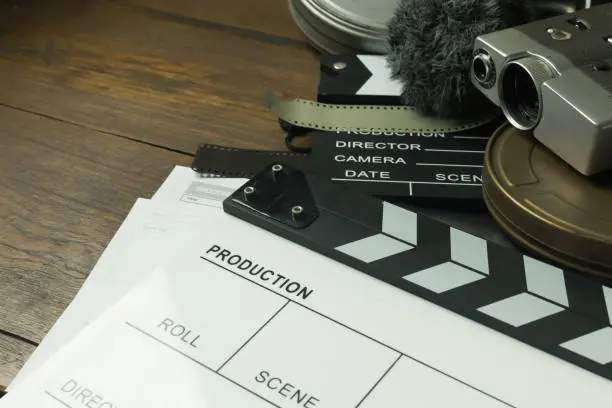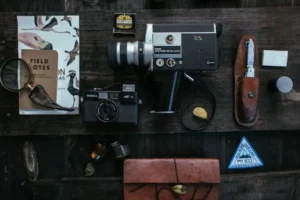
Top Features to Look for in a Film Production Management Tool
The production of a movie involves a swirl of organization, logistics, and Production Design. From pre-production planning to post-production corrections, every stage entails several teams working under limited finances and time. Dependency on spreadsheets and disconnected technologies simply does not cut it as the market gets more fast-paced and competitive. Film production management solutions, therefore, come in very handy for optimizing processes, enhancing teamwork, and keeping your project on schedule.
But given the abundance of tools on the market, how would one decide which one to use? Whether you are creating a full-length feature film or an independent short, this article will help you find the “top features to search for in a film production management tool” that really supports your filmmaking path.
1. Complete calendar integration and scheduling
Any film production is fundamentally based on a strict calendar. Strong scheduling features of a decent film production management platform are absolutely vital. Therefore:
- Drag-and-drop schedules
- Calendar sync across departments
- Day-out-of-days (DOOD) reporting
- Custom call sheets
Real-time creation and modification of shooting schedules enables producers and assistant directors to remain on top of things—even as natural changes result from site problems, weather, or actor availability. Bonus points if the tool provides on-set convenience by smartphone access.
2. Scene management and breakdown of the script
Good productions begin with a thorough knowledge of the script. Your instrument should let you:
- Automated or manual script breakdowns
- Scene labeling by character, location, props, wardrobe, etc.
- Color-coded categories for rapid visual parsing
- Integration with Final Draft or Celtx
This tool guarantees accuracy when synchronizing departments including costume, art, and cinematography in addition to saving time. It transforms your script into an entirely trackable, actionable record.
3. Manager of Cast and Crew
Dealing with people is equally as important as handling projects. Look for a forum that allows you to:
- Details about the cast and crew
- Track availability and contracts
- Share updates and call sheets by email or SMS
- Assign roles and duties
Certain solutions even have digital signature capabilities, which lets you go paperless yet maintain organization—contributing to Green Filmmaking efforts. When you strive to avoid 6 AM location mix-ups, communication and clarity are absolutely crucial.
4. Tracking expenses and creating budgets
The worst nightmare of a filmmaker is budget overruns. Features of integrated budgeting make the greatest production management instruments:
- Creation and tracking of line-item budgets
- Purchase order and expense management
- Real-time cost reports
- Integration with accounting software
Tracking where every dollar is going can enable you, whether working with a micro-budget or a studio-scale budget, to make better decisions during production.
5. Media storage and File Sharing
Scripts, call sheets, reference pictures, legal documents, videos, and more are produced by film projects in digital form. Your tool should provide:
- Version control
- Secure cloud-based file storage
- Granular permissions
- Simple sharing with internal and outside colleagues
Having all of your important files available from one central hub—especially when using Cloud Tools—guarantees everyone is working from the most current resources and helps to save hours of back-and-forth.
6. Cooperation Tools
Communication is essential, particularly among teams spread over time zones or distances. A strong basis for film production management will provide:
- Task assignments and progress monitoring
- Shared calendars
- Team messaging or chat integrations
- Comments on documents and schedules
Real-time updates help to avoid misunderstandings, keep everyone in line, and speedily approve decisions.
7. Mobile Entrangement
Production takes place on the road. Whether you’re exploring sites, filming in the field, or going to meetings, your management application should run perfectly on mobile devices.
- Responsive mobile UI
- Offline mode for poor connectivity
- Push notifications for critical updates
Nowadays, it is not optional to be able to retrieve call sheets, change scenes, or quickly note your team from your phone.
8. Adaptable Templates and Workflows
Every manufacturing process is unique; hence, your tool should fit your process instead of the other way around.
Custom project templates, tailored permissions and user roles, flexible task and checklist creation.
You will be far more likely to utilize a product regularly and efficiently if it allows you to create your own method around how you and your team really operate.
9. Complement with Industry Tools
Your production tool should fit others really nicely. Seek for interactions involving:
- Final Draft, Studio Binder, or Movie Magic
- Google Drive and Dropbox
- Slack or Microsoft Teams
- Zoom or any collaboration tool
The change and teamwork will be more seamless the more your program connects with what your staff is already utilizing.
10. Reporting and Analyzing
At last, a fantastic film production management tool should enable you to grow and learn for next time. Search for:
- Project health dashboards
- Time monitoring reports
- Budget against actual comparisons
- Crew efficiency insights
Generating comprehensive reports enables manufacturers to keep stakeholders informed and make data-driven choices.

FAQs
1. Which tool is used in film production management?
Software used to simplify and centralize the planning, coordination, and execution of a film project is a tool used in film production management. From budgets and crew communications to file storage and schedules and scripts, it aids in the management of everything.
2. Why should independent filmmakers use production management instruments?
Many times, indie directors balance tight finances and several roles. Even with little resources, these techniques assist in saving time, lowering mistakes, and keeping everything orderly. Many
also provide small teams with free or reasonably priced plans.
3. How could project management tools differ from production management tools?
Designed especially for film and TV processes, production management tools include call sheets, screenplay breakdowns, and cast/crew management. Typically, general project management solutions lack industry-specific capabilities.
4. For my production, which instrument would be best?
Start by noting your project’s size, budget, and process requirements. Search then for a tool covering communication, budgeting, scheduling, and script management. Demo versions or trial versions can assist in pre-committing testing.
Conclusion
The correct technology for film production management not only helps you to keep your project under control but also enables your whole staff to concentrate more on narrative than on logistics. Modern technologies provide so many functionalities that there is no justification for following antiquated practices. Discover a solution that meets your requirements and helps to ensure that your next production runs more successfully, smartly, and smoothly.

